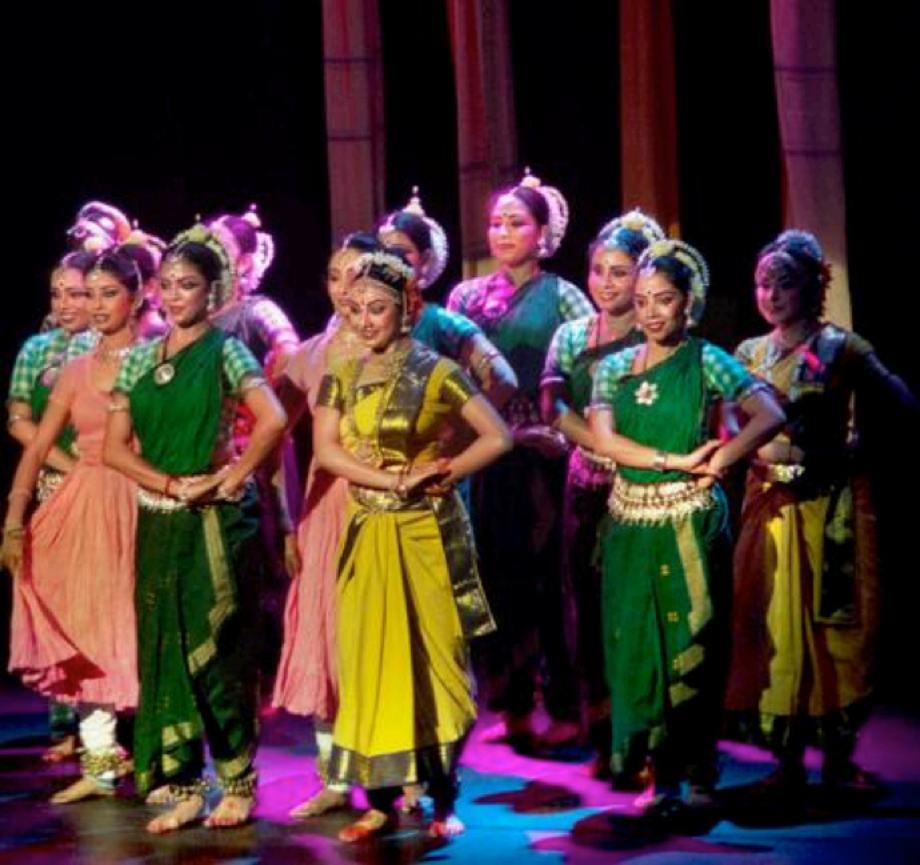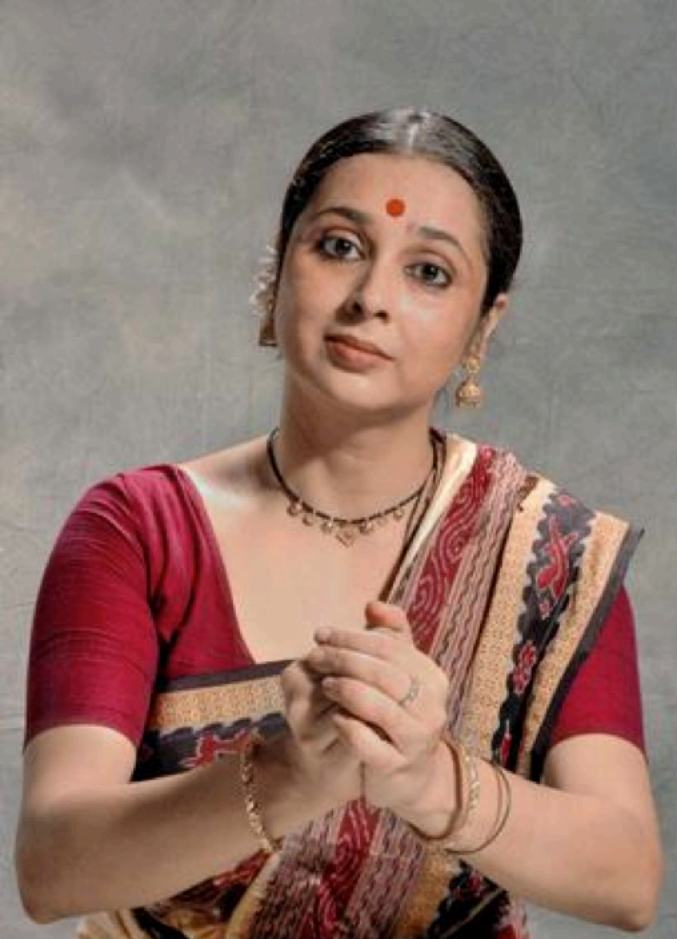Sharmila Biswas, the Kolkata-based Odissi dancer, presented her group production, ‘Chhandamalika,' at the multi arts Timeless Tagore festival at NCPA, Mumbai. Conceptualised as an exploration of Rabindranath Tagore's philosophy of rhythm expressed in his idea of the ‘Universal Spirit,' which pervades every part of the cosmos, the piece brought together the dance forms of Odissi, Kathak and Bharatanatyam.
A complex, but conceptually clear soundscape was the perfect foundation for this excellent choreography, which showed a dancer's mind at work at every step.
A variety of instruments, mainly percussion, from Odissi tala vadya as well as elements of similar Carnatic and Hindustani talas used mainly as a counter reference to the former rather than a jugalbandi, provided the core.

PHOTOS: SPECIAL ARRANGEMENT
Electric: Chhandamalika presented by (right) Odissi dancer Sharmila Biswas.
Inspired choice
The transitions from one section to another were bound by songs, composed by Tagore, of the same talas. This proved to be an inspired choice since Rabindra Sangeet borrows elements from all kinds of classical and folk music and is in many ways a creative essence of several Indian forms.
‘Chhandamalika' develops around everyday human activities and games, which evolve into riddles in Odissi talas. The predominant mood was set by these talas from different parts of the state that Biswas has been researching for more than two decades, such as the mridangam traditions and the Sambalpuri folk artists who play percussion instruments such as dhol, tasha, nishan and jhanjha, while simultaneously using different pitches.
Sharmila was especially interested in the teaching methods the rural artists followed. For generations, gurus have used sticks to teach complex calculations of tala to children who could barely write.
All of these were mirrored in this playful and intriguing choreography, which invoked rhythm and its manifestations at cosmic, personal or everyday human planes in very specific ways. The seven Odissi dancers who dominated the production along with the three Kathak and Bharatanatyam dancers created an electric atmosphere on stage. Fanciful questions, puzzles and mock squabbles typifying the breaks and departures in the complex calculations underlying the rhythms were expressed in the curves, bends and suspended tension of the Odissi dancers. The quicksilver quality and frequent change of mood on stage had the appeal of a particularly challenging conundrum.
Every now and then the dancers yielded to lokdharmi touches to emphasise a more regular play-acting than stylised abhinaya. The use of Tagore's songs with their elusive open-ended sahitya added another dimension to what was being proposed on stage by the dancers and helped the audience to participate in the making of its meaning too. Thus in a rousing Tagore song, ‘Otho, Otho' (Awake, Arise), Odissi dancers initially moved on stage in a drowsy way before “waking” up to the demands of crisp, classical correctness and energy.
Biswas's choreography was characterised by several intelligent choices and the sure-footedness of experience, which elevated it from the regular “fusion” fare. The costumes were toned down so that while the basic identity of each style was established, there was no gratuitous prettiness. This minimised the element of spectacle, while keeping the dramatic possibilities suggested by the clash, meeting and separation of rhythmic cycles intact.
In the opening section, Biswas set the tone for the production with some elemental Odissi movements to one of Tagore's best-loved songs, ‘Anandadhara Boyiche Bhubane' (the trail of joy flows through the Universe), and its mood of cosmic grandeur and joy.
Pure humour
Soon the dancers circled her with a drum decorated with a skirt, an instrument used in western Odisha. The swaying cloth enhanced the specific undulating rhythm of Tagore's song. A range of traditional musical instruments was used to provide a joyous sound and this also reduced the overly serious, sameness of traditional music. This was essential because the production provided glimpses of pure humour, a rasa rarely seen in classical dance.
When the Odissi dancers came in with sticks, the mood was charged. Sticks were dropped, gathered, passed around as playful and mock-aggressive arguments took place. Two dancers came to a head, while some ran away with the sticks even as one heard gurus teaching tables in the traditional style. The dancers swarmed together again as the Odissi rhythms gave way to another Tagore classic, ‘Aaye tobe sahachari...' (Come friends, holding hands... let us dance). A change of mood followed with the excellent rendition of a darker song from Tagore, ‘Moner Pakhi, Boner Pakhi' (The free bird, the caged bird).
When the dancers were on stage for the last song, ‘E Shudhu Alasa Maya' (These are just lazy, stray thoughts...), there was a sense that after their high energy games, they too realised that just like thoughts that enter the mind on a lazy afternoon before dispersing, the rhythm of life is in constant motion.

